#indigenous rock art
Explore tagged Tumblr posts
Text
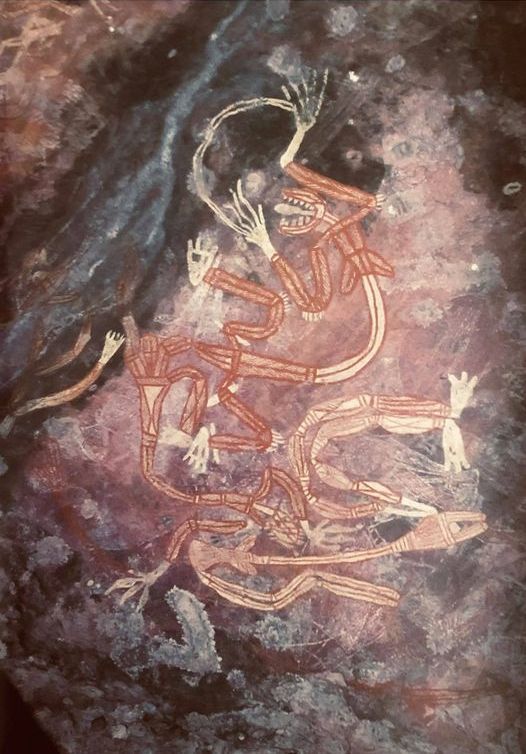
Arnhemland Rock Art Cave painting from Aboriginal Australia
#aboriginal art#art#tribal art#aboriginal painting#australian art#aboriginal artist#australia#aboriginal#painting#aboriginal culture#cave painting#indigenous rock art#australian rock art#aboriginal rock art
311 notes
·
View notes
Text



Petroglyphs on Potash Road - May 22nd 2022
#colorado river#original phography#photographers on tumblr#petroglyphs#indigenous rock art#moab utah#road trip 2023
12 notes
·
View notes
Text

Coyote and the stars. One of the coolest pictograph panels along 9 mile canyon here in Utah. It is called the world’s longest art gallery. There are so many pictograph panels along this drive, this is one of my personal favorites. They are the work of the Fremont and Ute tribes that inhabited the area thousands of years ago.
138 notes
·
View notes
Text








There are as many as 100,000 petroglyphs on Mesa Prieta, including the largest number of Historic Petroglyphs in New Mexico. Historic images include Spanish lions, lots of crosses, wagons, inscriptions, dates, names, initials, churches & humans.
#divine_deserts#rockart#petroglyphs#indigenous#rock art#Native American#Puebloan#Espanola#Velarde#New Mexico#travel#day trip
55 notes
·
View notes
Text
IF YOU CANT PROTEST FOR ANY REASON BUT WANT TO HELP FIGHT PLEASE MESSAGE ME I HAVE AN IDEA AND ARTISTS I COULD USE YOUR HELP
#hardcore punk#punk rock#human rights#transgender#nonbinary#transmasc#transfem#lgbtq#latino#mass deportations#acab1312#indigenous#native american#blacklivesmatter#art#traditional art#artwork#original art#artists on tumblr
15 notes
·
View notes
Text
#MonotremeMonday:

Echidna petroglyph, 90cm
from the 'Echidna and Fish' site at West Head in Ku-ring-gai Chase National Park, NSW, Australia
“It is difficult to date the echidna engraving using current scientific techniques, particularly as there is no soil covering it. Dating is also difficult because re-grooving sometimes occurs during later ceremonies. However the style of the drawing, known as 'simple figurative', and its state of preservation suggests it was made in the last few thousand years. The simple figurative style is confined to the region.”
via Australian Museum:
#animals in art#petroglyph#rock art#rock carving#echidna#Australian animals#monotreme#Aboriginal art#Australian art#Indigenous art#Australian Museum
22 notes
·
View notes
Text

Gwion Gwion figures wearing ornate costumes, Indigenous Australian rock paintings from the Kimberley region, West Australia
80 notes
·
View notes
Text




“my body not yours”
photo credit: treehouse media - joshua franzos
#central flow#central flow Roxanne#Roxanne in all leather#are we still breathing?#witchblr#green witch#alternative rock music#alternative black girl#alt black girls#body autonomy#lgbtq icons#black witch#black goth#indigenous#indigenous art#choctaw#cheroenhaka#seminole#gothic fashion#southern gothic#alt rock#alt model#black cowboys#black cowgirl
72 notes
·
View notes
Text

Monster Girl October Tarot day 16: Spider Grandmother from Navajo and other Southwest American mythology as the 4 of wands!
Spider Grandmother appears in many myths and tales. It is said that she sometimes wraps up naughty children to eat in her web, but in most stories like that of the Hero Twins, she is a wise mentor and helper to others. The 4 of wands is a very happy card, indicating success, happiness, homecoming, and celebration in general. Spider Grandmother/Spider Woman in literature is a beloved figure and savior to others, often acting as the key figure in the characters' successful accomplishment of their goals. Here, Spider Rock from Arizona is in the background, representing her home for the homecoming message as well!
#spider grandmother#spider woman#inktober#tarot#spider#ink drawing#ink#monster girls#traditional art#drawtober#artober#sketchbook#tarot card#tarot cards#spider rock#arizona#navajo mythology#indigenous literature#goddess
10 notes
·
View notes
Text
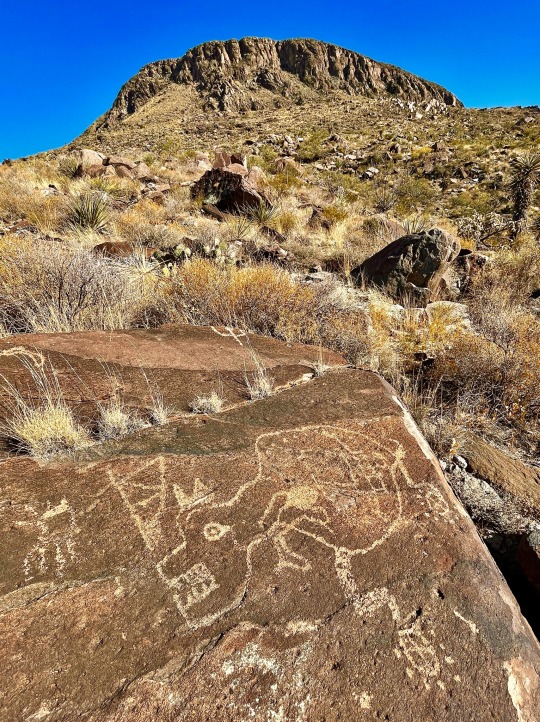
AM Site, NM (iPhone photo from 2021)
Let’s get this out of the way first: The last time I posted this, a bunch of people called it modern, i.e., fake (it is not). It seems there are many who can’t wrap their head around the idea that not all rock imagery is representational to real-world experience. The Ancient Ones had as much (if not more) creativity and imagination as modern humans. They had intricate belief systems, unique ways of looking at the natural and spiritual world, and most of all, they didn’t always draw what they saw. When looking at rock imagery, we must try to separate our own way of thinking from that of a person from over 1,000 years ago. They just saw things differently. This could be a bear. This could be a creature from the artist’s cultural cosmology. It could be something made up on the spot. We will never know for sure. But I can assure you, this image is from the Mogollon culture, dating somewhere around 200-1450 CE.
The glyph itself is one of my absolute favorites of all the rock imagery I’ve seen over the years. The imposing, toothy head is the first thing that stands out, but then you start to notice the more subtle details of this design. The two “legs” have quartered circles for feet surrounded by dots. These “legs” look lighter, possibly added at a later date. The “crown” could be ears or horns. There’s what looks like a small tail and more dots running along the back. I can’t even begin to theorize what’s happening with the small front “arms” and the other design inside the body. I love the shape of the eye.
Interpretations are fun to make, as long as we understand that it’s all a guess, and the only one who truly knows what this image means is the person who created it. They would probably say it’s a T-Rex. 😂
106 notes
·
View notes
Text
POLYNESIAN METAL
Found another Polynesian metal band. Holy fucking shit 💀
vimeo
There's something about it. It's like Mongolian metal: a cultural combination that makes perfect sense in retrospect.
vimeo
#rock music#metal#heavy metal#thrash metal#power metal#music video#Maori#Maori metal#te reo māori#history#indigenous#folk costume#action#martial arts#New Zealand#Polynesian#music#Alien Weaponry#Shepherds Reign#Vimeo#Samoan#Polynesia#Aotearoa#Samoa#folk metal
8 notes
·
View notes
Photo
Dear newguineatribalart thank you for sharing these images of such great power…Arnhem Land Rock Art Australia Sacred Images.
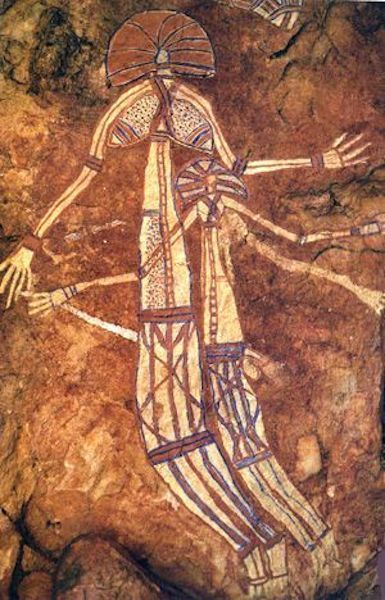




Arnhem Land Rock Art Australia
Different regions of Australia have different styles of Rock art. Arnhem Land Rock Art is I think is the artistically most exciting because it is full of spirits and figures. These figurative depictions reflect some of the world’s earliest spiritual beliefs.
912 notes
·
View notes
Text
this literally looks like a modern day middle-school desk i'm losing my mind humans have always been humans
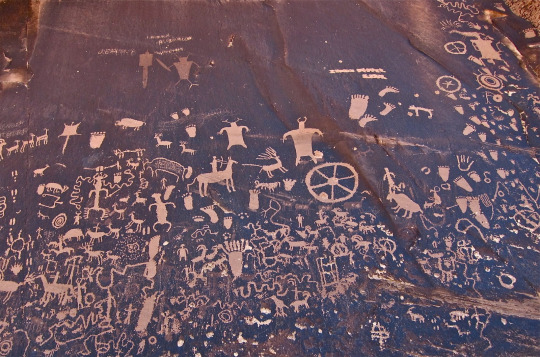
Image: Newspaper Rock, Utah, first carvings c. 0 BCE
#art#rock art#petroglyph#utah#cave art#cave paintings#humans being humans#humanity#indigenous art#prehistory#prehistoric art
22 notes
·
View notes
Text




𝙽𝙴𝚆 𝙸𝙽𝚃𝚁𝙾 ‼️‼️‼️
(some things I forgot to add; tekken, Invader Zim, SVTFOE, Myst and the b-52's)

#eliassgrubb#art#indigenous artist#811 game#the magnus archives#hfjone#osc community#the hollow netflix#hlvrai#tenacious d#alternative rock#metalhead#grunge#radioheadftw#idkimmanerd#tekken#tekken 3
9 notes
·
View notes
Text
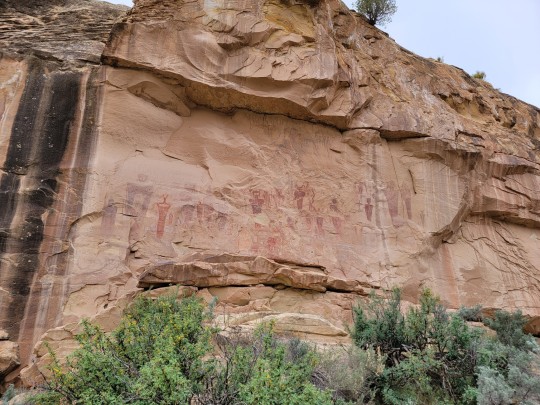

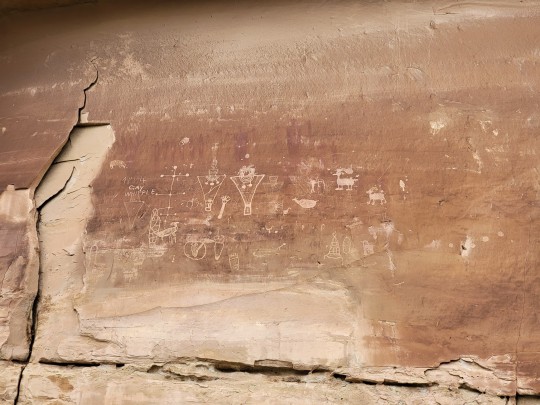
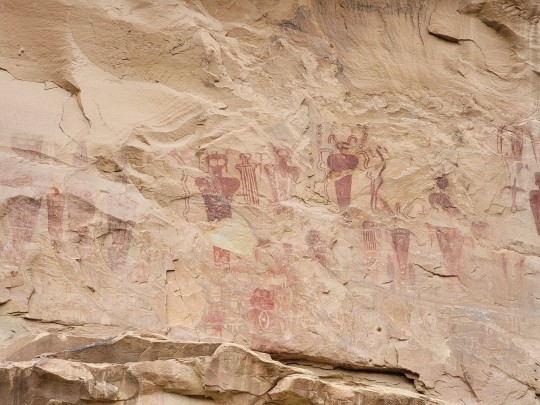

Petroglyphs in Utah - May 20th 2023
#petroglyphs#rock art#indigenous history#utah#photographers on tumblr#road trip 2023#original phography#the sad thing about this is some mormon ranchers kept a horse stable adjacent to this art instead of giving the land to indigenous people#this is south of a reservation just barely outside of it#colonial settler history never changes
30 notes
·
View notes
Text
Puerto Rican Rock Art, Part 2
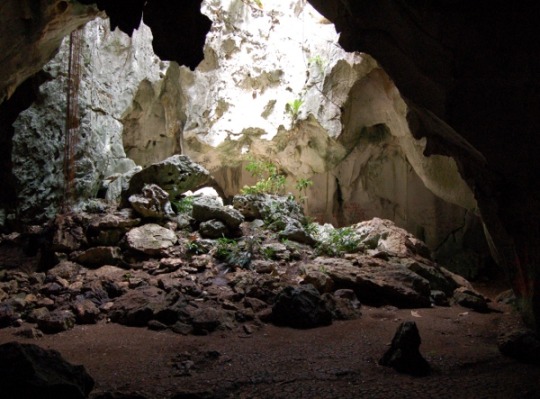
Hello and welcome to part 2 of my Puerto Rican Rock Art project! I will mostly be talking about Cueva Lucero (pictured above). I may mention other caves as well, just because there aren't many papers written about this specific cave. There are many others since about 81% of rock art found on the island is found in caves (Dubelaar 1994). I imagine it's just easier to talk about all the caves as a whole since they were all used similarly.
Cueva Lucero can be found in Juana Diaz in Puerto Rico. (Not from references).

However, due to fears of vandalism, the cave's exact location isn't listed in the National Register of Historic Places. In this same form, Cueva Lucero is deemed as important due to all the art found in it, this art shows us a part of the past we could have never seen without it. It is thought to be a place of religion or as a ceremonial site (Rodriguez et al, 2008). This cave was used around 600-1500 C.E., and represents mostly pre-Hispanic times and contains around 100 rock art images. That makes itself one of the best examples of pictographs in Puerto Rico (Rodriguez et al, 2008). While it has plenty of pictographs, it has petroglyphs as well.
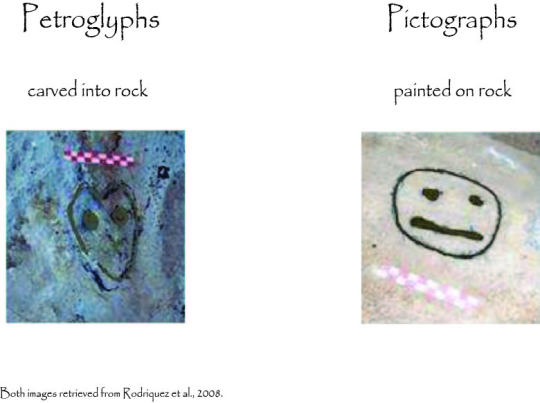
The difference between petroglyphs and pictographs are that one is painted, and one is carved imagery. I included an example above.
There are three different types of landscapes that both these styles show up in:
A. Caves and rock shelters on the coast, created by the waves.
B. Caves and rock shelters found in the mountains.
C. Riverbanks and riverbeds.
As well, Puerto Rico has an extra type:
D. The petroglyphs found in Puerto Nuevo. They are engraved in flat sandstone ledge that run parallel to the coast (Dublelaar 1994). Pictured below.
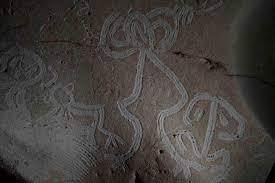

Rock paintings found in Puerto Rico can be monochrome, bichrome and polychrome (Dubelaar 1994). They also can be found in a couple colors as well. Red, white, orange and black were most commonly used (Hayward et. al., 2009).
Cueva Lucero falls under type B, has most, if not, only monochrome paintings. Most are painted using the color black.
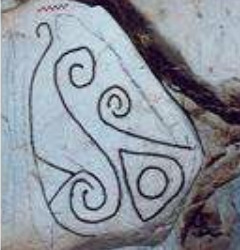
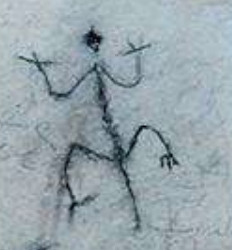

Here, you also see a lot of circles being used in their art. Obviously, using circles so much does suggest that the shape has importance for the community (Fewkes 1903). It can be seen as a sign of unity, which, is found in many other indigenous communities. Here are some examples of circle art found in Cueva Lucero.
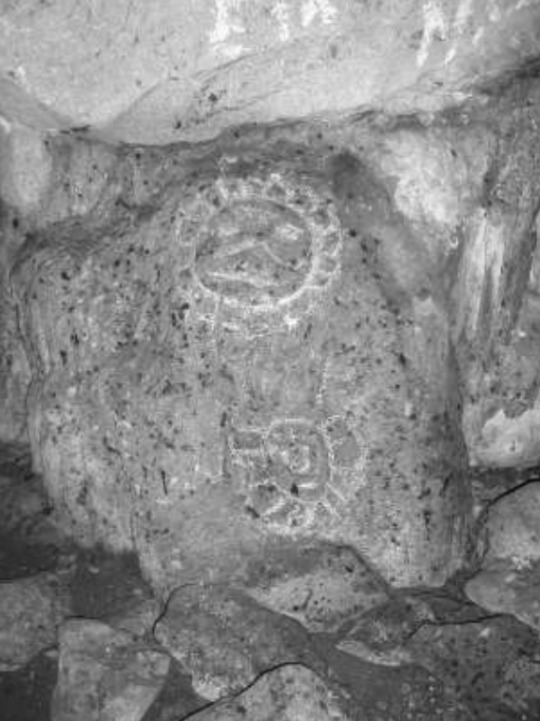

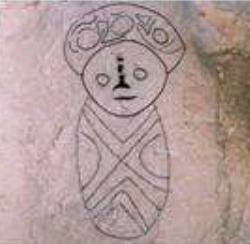


Lots of circles.
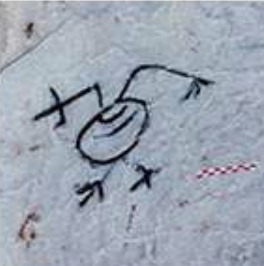
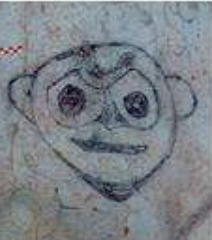
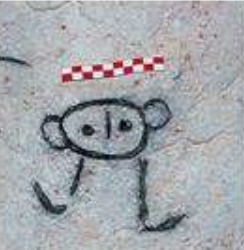
That is about it for this cave. Cueva Lucero holds valuable knowledge about the past. Without it, the other caves, we wouldn't have been able to obtain as much knowledge from our Taino ancestors as we do now. This goes to show, these old paintings and carvings, sites we find on the island (sites where people lived, hunting sites), are vital to understanding our history.
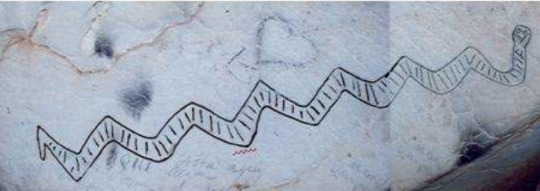
All photos (unless otherwise stated) are pictures from Cueva Lucero. All but the very first photo are from Rodriguez et al. 2008.
My references:
Dubelaar, C. N. 1994. Prehistoric rock art in Puerto Rico. Latin American Indian Literatures Journal, 10(1): 78–82.
Fewkes, J. Walter. “Prehistoric Porto Rican Pictographs.” American Anthropologist 5, no. 3 (1903): 441–67. http://www.jstor.org/stable/659123.
Hayward, M. H., Roe, P. G., Cinquino, M. A., Alvarado Zayas, P. A. and Wild, K. S. 2009. “Rock art of Puerto Rico and the Virgin Islands”. In Rock Art of the Caribbean, Edited by: Hayward, M. H., Atkinson, L. G. and Cinquino, M. A. 115–136. Tuscaloosa: University of Alabama Press.
Lace, Michael J. “Anthropogenic Use, Modification, and Preservation of Coastal Cave Resources in Puerto Rico.” The Journal of Island and Coastal Archaeology, vol. 7, no. 3, 2012, pp. 378–403., https://doi.org/10.1080/15564894.2012.729011.
Rodriguez, Yasha N. and Pedro Alvarado Zayas. 2008. "Cueva Lucero." National Register of Historic Places Registration Form. On file at Puerto Rico State Historic Preservation Office at San Juan, Puerto Rico.
Rouse, I. 1992. The Tainos: Rise and Decline of the People Who Greeted Columbus, New Haven: Yale University.
#archaeology#anthropology#cave#cave art#cave paintings#art#rock art#taino#indigenous peoples#pictographs#petroglyphs#colonialism#colonialization#university#school project#blog#puerto rico#grug#monochrome#mountain#caribbean#circles#frog#bird#references#little guys
31 notes
·
View notes